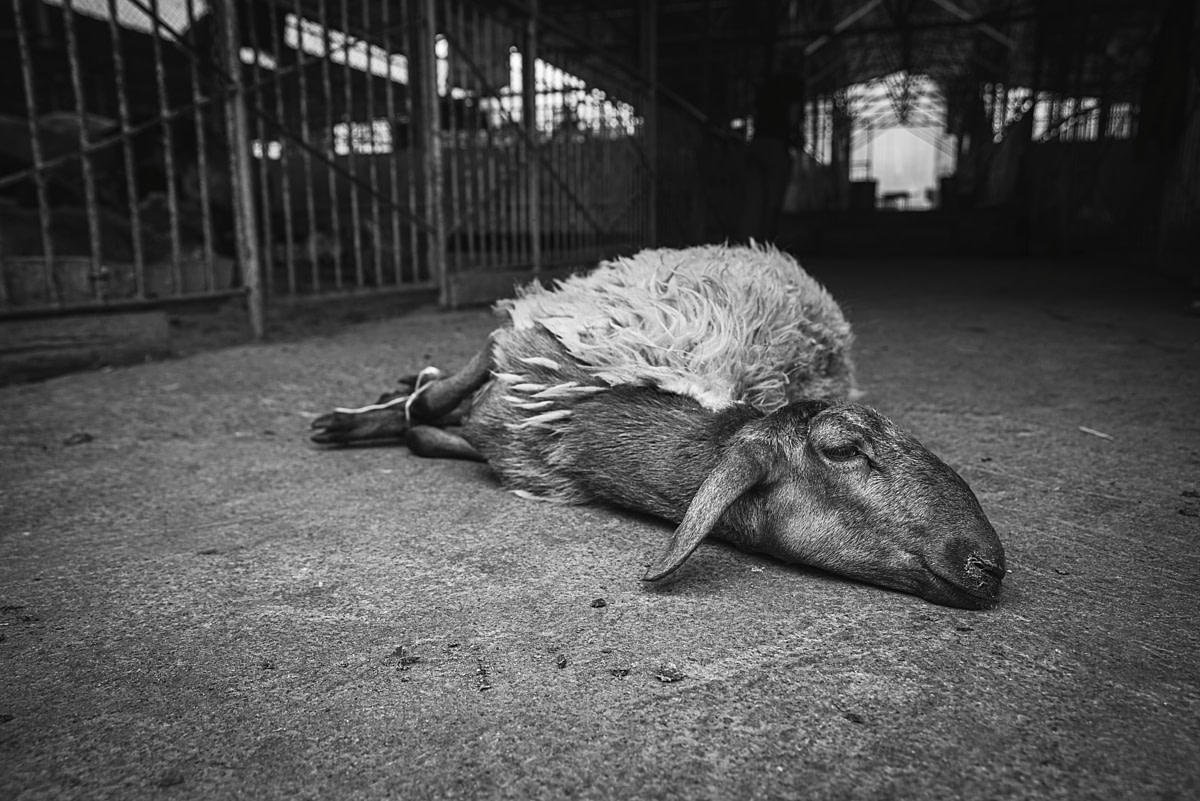A bound sheep selected for slaughter lies with an outstretched neck on the floor of an animal market. Kamenka Meat Market, Almaty Province, Kazakhstan, 2024.
Bogna Wiltowska / We Animals
As a We Animals Fellow, photojournalist Bogna Wiltowska bore witness to the lives of farmed animals in a region where industrial agriculture is beginning to take hold.
On World Farmed Animals Day, we invite you to explore a compelling visual journey and witness the untold stories of the animals Bogna encountered while documenting in Kyrgyzstan and Kazakhstan.
Read on to view the virtual exhibit of Bogna’s animal photojournalism and to find out what she had to say about her Fellowship experience.
Explore The Virtual Exhibit
Event Duration: October 2 – November 2, 2025
📌 Note: This free event is entirely virtual, allowing participants worldwide to come together in support of Bogna Wiltowska’s impactful work. The exhibit is available in English.
Content warning: This exhibit includes some graphic imagery
An Interview With Bogna Wiltowska
Bogna’s project illuminates underrepresented animal stories in Central Asia and provides advocates in the region with strong visuals for their work.
We sat down with Bogna to find out about her Fellowship journey.
What did the Fellowship help you achieve?
The Fellowship was one of the most important experiences in my work for animals. It came at a very special moment in my life. After over a decade of working for animals and managing a large organization with an investigations team, I felt deeply tired and overwhelmed. The Fellowship placed me in a completely new role. This time, I was the one receiving support (instead of giving it), and I had the chance to learn from the best in areas where I had previously been self-taught.
The focus of my Fellowship work was Central Asia. This region once lay along the ancient Silk Road, and its location between China, Russia, the Caucasus, and Eastern Europe makes it a place of very rapid development. This development has a big impact on animals. Traditional farming is being replaced by industrial production. These are also countries where high meat consumption (especially horse meat) is a strong part of the culture.
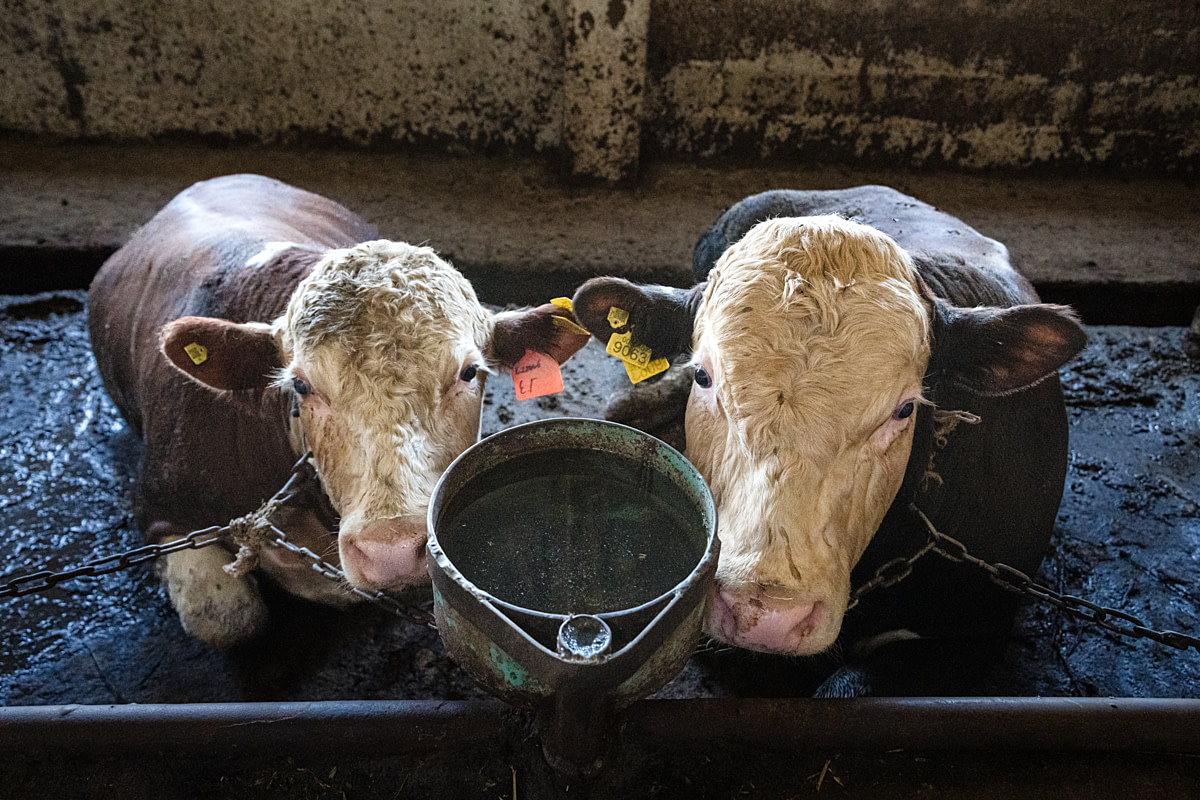
Two dispirited-looking bulls peer up as they lie tethered by short chains to a metal railing inside a dirty, gloomy feedlot barn. The animals’ entire world consists of these conditions, where they live for months while being fattened for slaughter. Once reaching the desired weight, the facility sells them to a slaughterhouse. Undisclosed, Bekitai, Chuy Region, Kyrgyzstan, 2024.
Bogna Wiltowska / We Animals
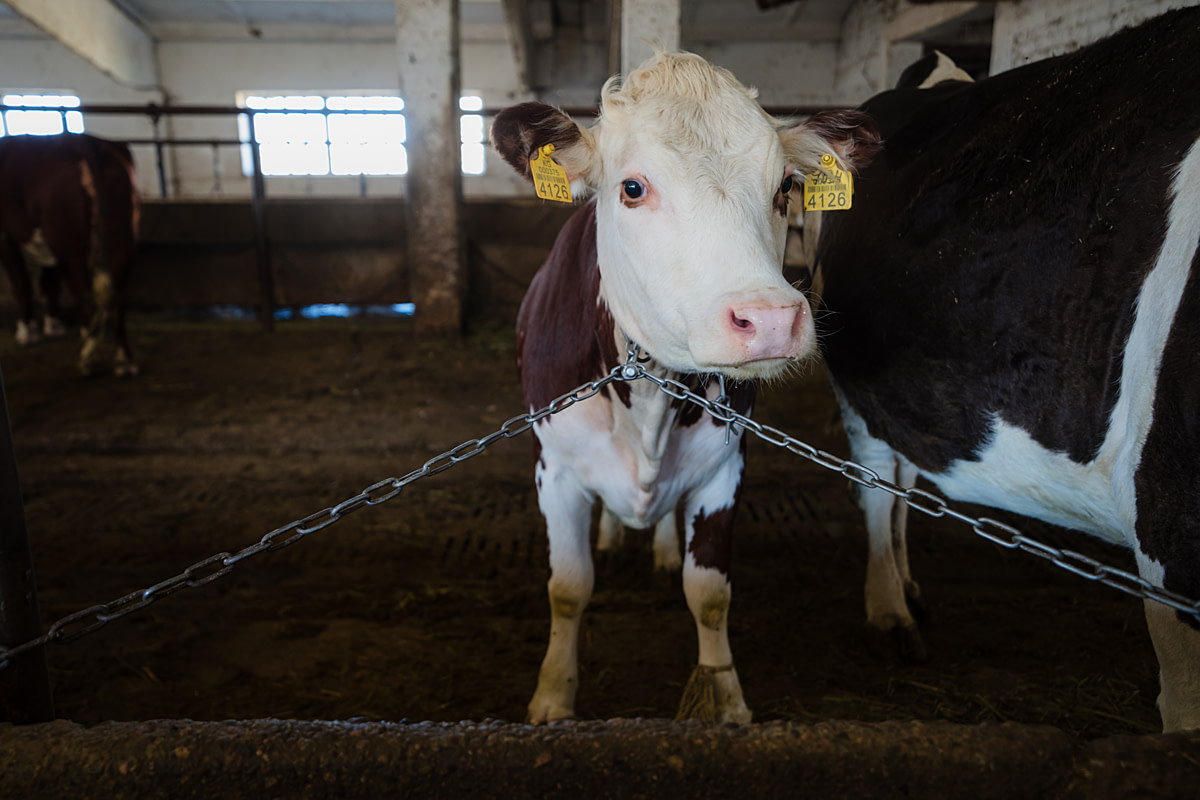
A young heifer restrained at the neck by two short chains on a dairy farm stares up from her position in a tethering system. Even young animals live constantly tethered here, able only to stand or lie down. Undisclosed, Sokuluk, Chuy Region, Kyrgyzstan, 2024.
Bogna Wiltowska / We Animals
Until now, the lives of farmed animals in Central Asia have remained largely undocumented. At the same time, I knew that an animal rights movement led by passionate grassroots activists was slowly beginning to emerge there. I felt a deep admiration and respect for the activists’ courage: building something so important from the ground up, often with limited resources and in a challenging environment. This was the perfect moment to take a closer look at what was happening and give animals a voice in countries where they aren’t often considered.
The Fellowship taught me … humility. Before going to Central Asia, I had many years of investigative experience in different countries. I had a clear plan and vision of what I wanted to document. But once I arrived, many unexpected things came up—things I hadn’t considered—which were valuable lessons and gave me insights I will carry into future projects.
At every stage of the project, I received a lot of support from the We Animals team, which was incredibly helpful. I grew not only as an activist but also as a photographer. My work with the camera became more intentional, and I still carry many precious tips I received from Jo-Anne McArthur in my mind.
Thanks to the Fellowship, my work for animals is stronger, and I feel more confident and more aware of both my abilities and my limits.
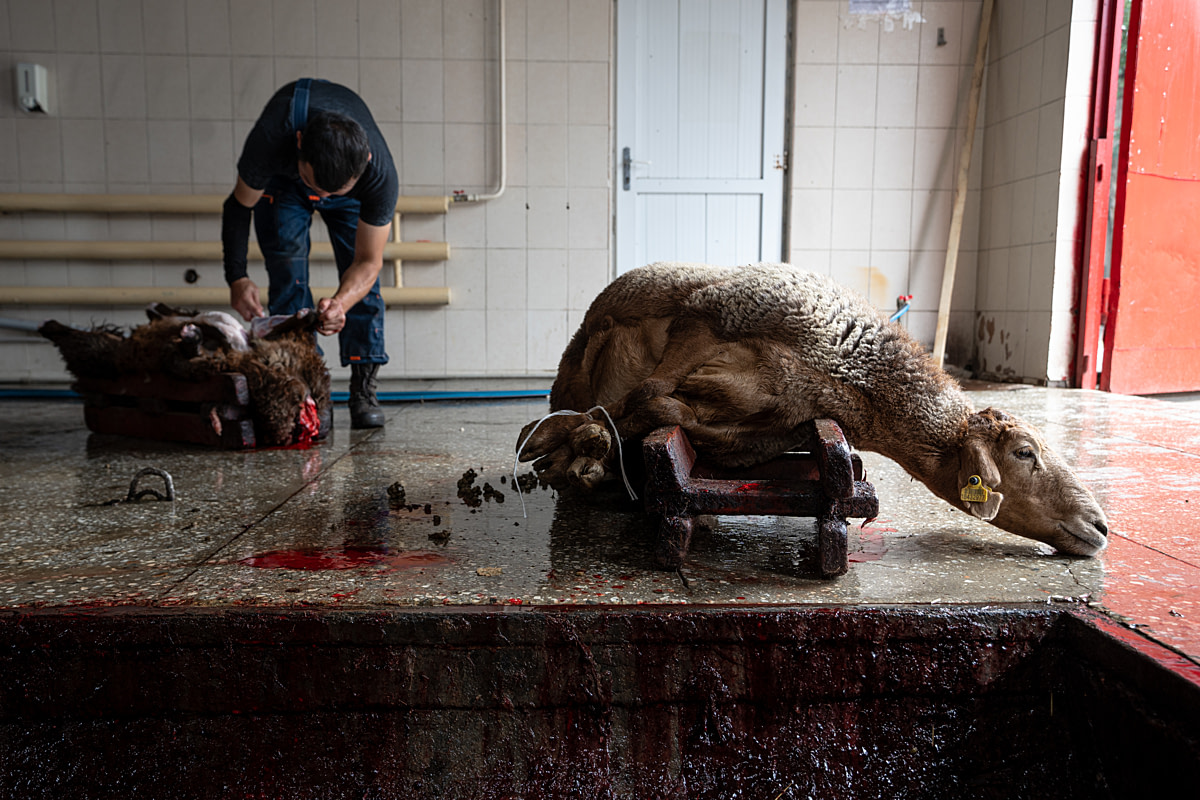
A sheep, bound at the legs, lies incapable of escape on a bloody slaughterhouse butchering cradle and stretches their head across the floor. A worker butchers a dead sheep nearby. Kamenka Meat Market, Almaty Province, Kazakhstan, 2024.
Bogna Wiltowska / We Animals
What was your experience like in the field during your Fellowship assignments?
During the Fellowship, I visited slaughterhouses, farms, and live animal markets. Since it was my first time working in Central Asia, I wanted to gain as much of an overview as possible of the situation of animals in this region. I managed to experience a broad spectrum: I traveled extensively, spoke with people such as workers, traders, and slaughterhouse owners. I visited both small local facilities and the largest, professional operations.
Even though I had many years of investigative experience, I wouldn’t say I ever became immune to these difficult experiences. One of the hardest moments was witnessing and documenting halal slaughter up close. The animals were fully conscious, and watching them suffer as life slowly left their bodies was always deeply shocking. Their pain stayed with me for a long time. While working, I put on a mask—a kind of armour—but once back home, I always needed time to recover.
Unexpectedly, my biggest enemies were time and an old car that didn’t always let me get where I wanted to go, especially in the very mountainous Kyrgyzstan. Some places were difficult to access. Traveling across Kazakhstan, one of the largest countries in the world, was another challenge because of the vast distances. When I planned my work in Central Asia, I knew logistics would be complicated, but I didn’t realize just how complicated. This left me frustrated and angry at myself for not being able to complete everything I had planned. I turned this into a valuable lesson, and even though my Fellowship has ended, I plan to continue the project in this region.
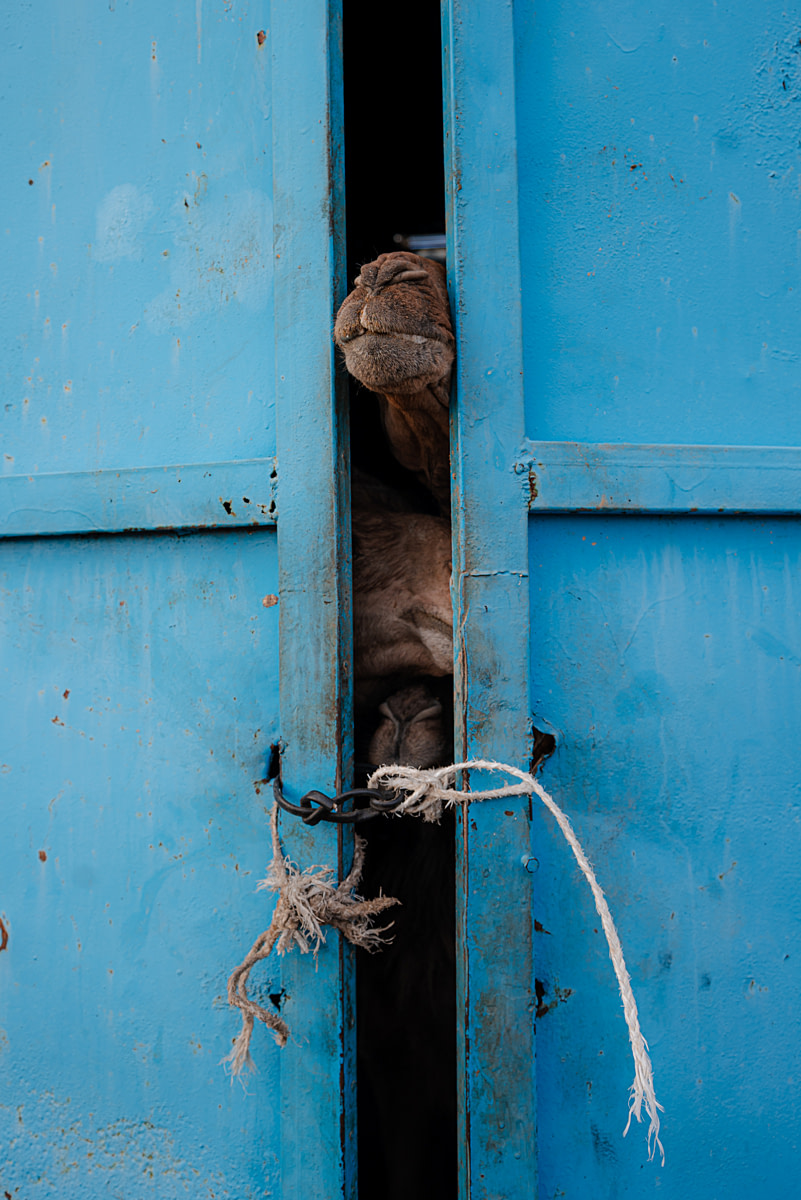
Bogna Wiltowska / We Animals
In fieldwork, the most important things are flexibility and the ability to act quickly. You can’t plan everything in advance, even though, of course, you need to have a plan. But you must always be ready to adapt. Conditions are often tough and changeable. It’s not a photoshoot; it feels more like being on the front line. What also matters is awareness: why we are here, what story we want to tell, and how we want to tell it. And above all, respect. That should always come first. Not only for the animals, but also for the people, which might not always feel intuitive, especially in places like slaughterhouses. But I avoid creating antagonism and try to listen to people’s stories, because they are closely connected with what happens to the animals.
While in Kazakhstan, I visited a camel farm. In Central Asia, a popular drink called shubat is made from fermented camel’s milk. People also believe camel’s milk has many health benefits, even curing diseases, and so demand for it is rising sharply. Camel meat is also consumed. The same is true with horses: mare’s milk is used to make kumys, a very popular drink available in every shop and market, and horse meat is one of the most commonly eaten meats. Perspective shifts: animals we see in Europe more as companions (though of course they are also exploited and suffer there) are seen here as products. And the dairy industry follows the same cruel logic everywhere: we take mothers’ milk away from their babies, the babies are fattened, and then sent to slaughter. I will never forget the huge, glassy eyes of the camel calves. One of them had such a strong sucking reflex that he tried to nurse on my fingers, sucked on the strap of my camera, and even a piece of my shirt.
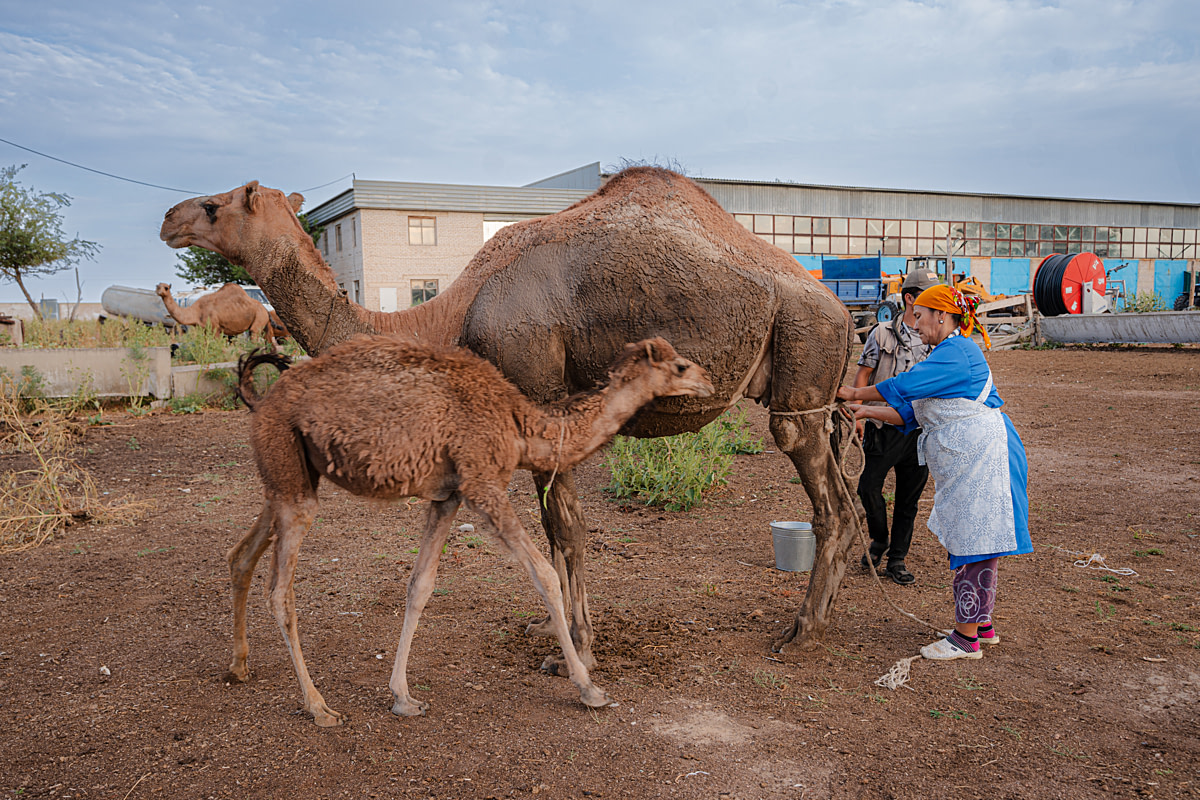
A calf at a camel dairy farm tries to approach his mother as workers tie rope around her hind legs before milking. Her milk is taken for human consumption instead of feeding her calf. Camel milk is widely consumed and in high demand in the region, where industrial camel farming continues to grow. Undisclosed, Akshiy, Almaty Region, Kazakhstan, 2024.
Bogna Wiltowska / We Animals
Experiences like this sometimes make me doubt whether what we do as animal photojournalists and animal rights activists more broadly makes a difference, especially when faced with such immense suffering. But clarity always comes back quickly. I’ve learned to celebrate small victories, value new connections, draw inspiration, and … rest. Balance is very important. At the end of my stay in Kazakhstan, I attended the second edition of a vegan festival. I met many wonderful, deeply dedicated people who want to build the animal rights movement in Central Asia. We have stayed in close contact ever since. Recently, the same group registered as an organization, and this year they organized the first animal rights conference in Central Asia. It’s incredible, and I’m glad my work in this region added a small brick to building a better world for animals here.
What was your go-to camera bag kit during the Fellowship?
I worked with a Sony A7 IV, mainly using the Tamron 17–28mm f/2.8 and the Sony FE 70–200mm f/4 lenses. After the Fellowship, and thanks to the experiences I gained while working in Central Asia, I decided to buy a new lens: the Sony FE 24mm f/1.4, which has now become my best friend in investigative work. I also had an Osmo Pocket 3 camera, but in the end, I barely used it, and I regret not shooting more video with it.
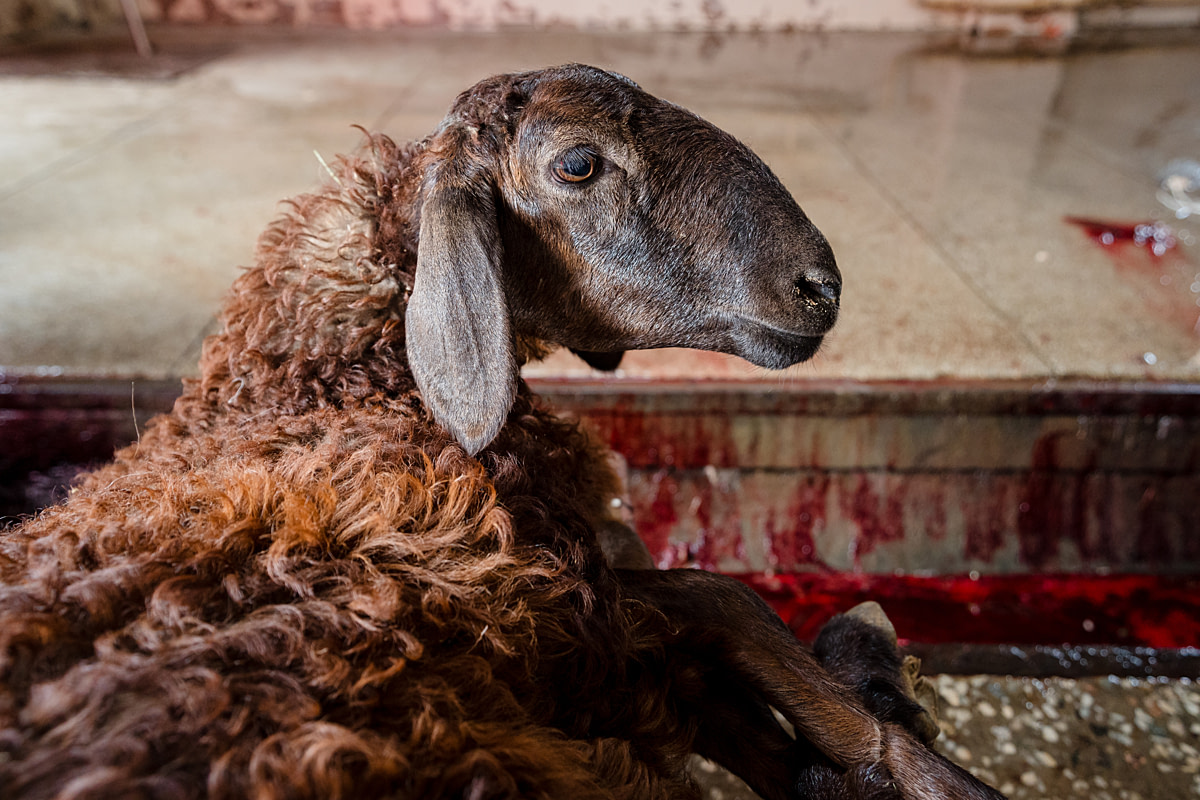
A terrified sheep, uncomfortably bound by the legs, stares up wide-eyed near a slaughterhouse floor trough filled with blood. Kamenka Meat Market, Almaty Province, Kazakhstan, 2024.
Bogna Wiltowska / We Animals
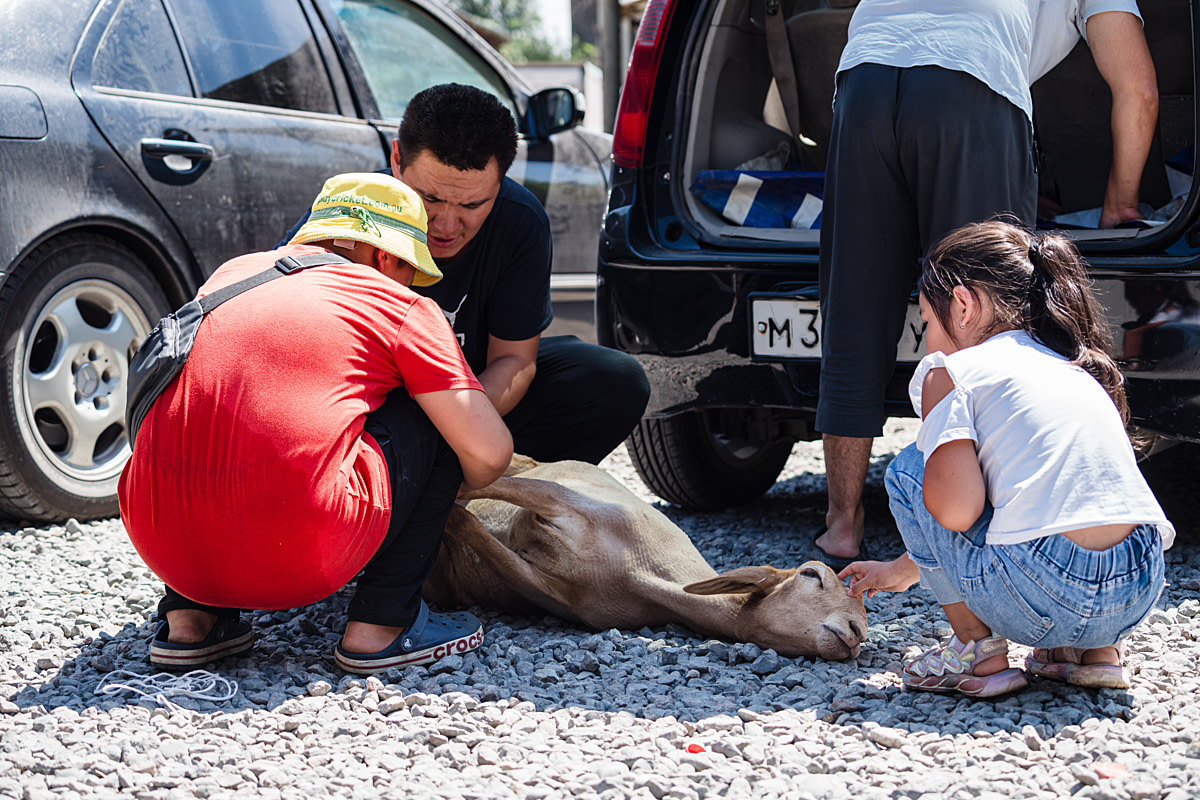
A ewe lies on the ground in an animal market parking lot as members of the family that purchased her tie her legs with a rope. A young girl leans over the ewe and gently strokes her head as another man prepares the back of their vehicle to transport the ewe. Undisclosed, Bishkek, Chuy Region, Kyrgyzstan, 2024.
Bogna Wiltowska / We Animals
How much did you explore image editing during the Fellowship, and what did you learn?
This was one of the most valuable lessons for me. I never saw myself as a specialist in this area, and I usually didn’t enjoy post-production for several reasons. Most of all, it’s the stage where you come face to face with what you have already lived through… without the adrenaline, and the stress. You relive the immense suffering of the animals once again, but this time in frozen frames, with all the details clearly visible. You have to look at it, reflect on it, and decide how to edit it. That is very difficult.
I often found myself procrastinating at this stage, mostly because I was afraid I wouldn’t be able to cope with the emotions. Thanks to the Fellowship, I learned a lot and improved my workflow. The organization of editing has always been one of my weaknesses: I’m known for being messy and chaotic with files, but this time, I had to maintain a certain discipline. Many of the things I learned during the Fellowship I have already implemented into my everyday work.
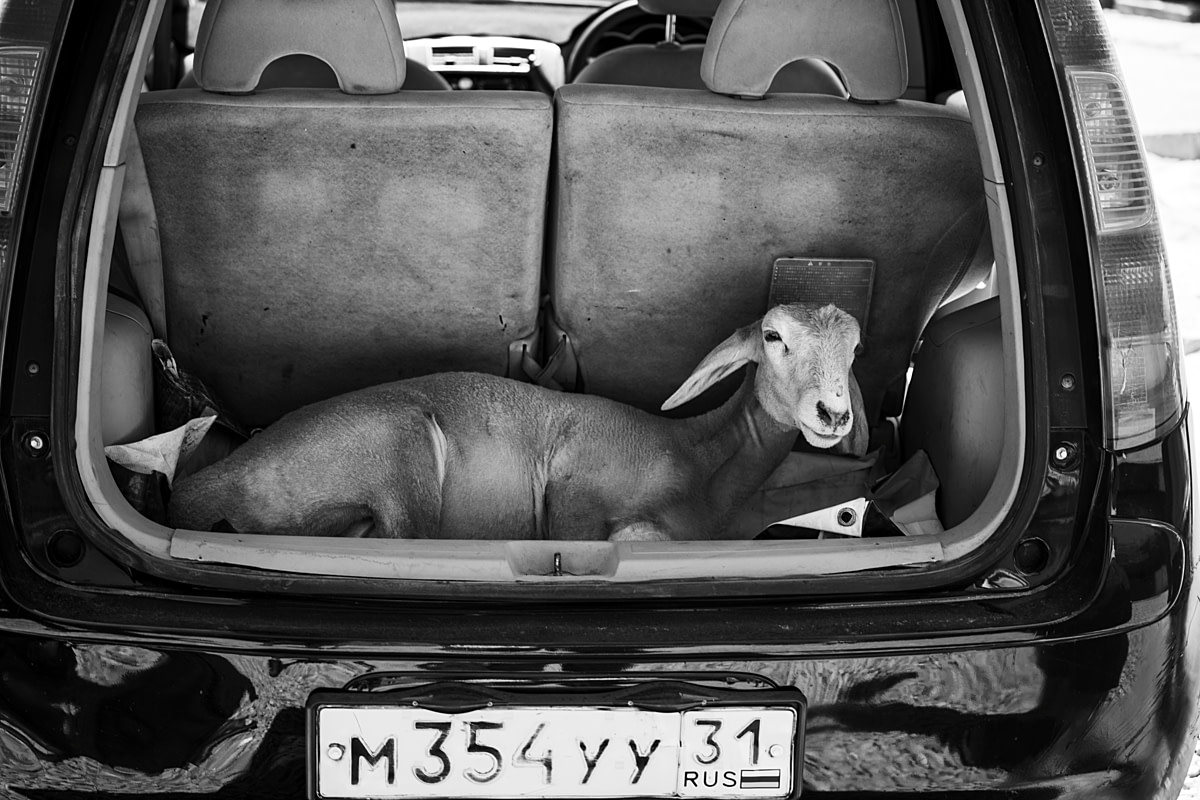
A ewe purchased at a live animal market, where buyers purchase animals for slaughter, lies tied by her legs in a car trunk. This day is likely the last of her life, and she will be transported to her destination like this in the back of the hot vehicle. Undisclosed, Bishkek, Chuy Region, Kyrgyzstan, 2024.
Bogna Wiltowska / We Animals
I want to encourage everyone who is hesitating to apply. And especially women! Activists, journalists, storytellers, photographers: be brave, believe in yourself, and fight for your place in this field. It doesn’t matter how much experience you have: if it’s little, you will learn from the best, and your only real enemy will be time, which I myself constantly struggled with. And even if you already have experience as an animal photojournalist, it’s still an amazing opportunity to carry out an important project for animals and to receive honest feedback at every stage of the work. Most of all, the Fellowship is a space where you are supported, understood, and inspired. It’s a chance to grow both as a professional and as a person and feel part of a global community working to tell animals’ stories.
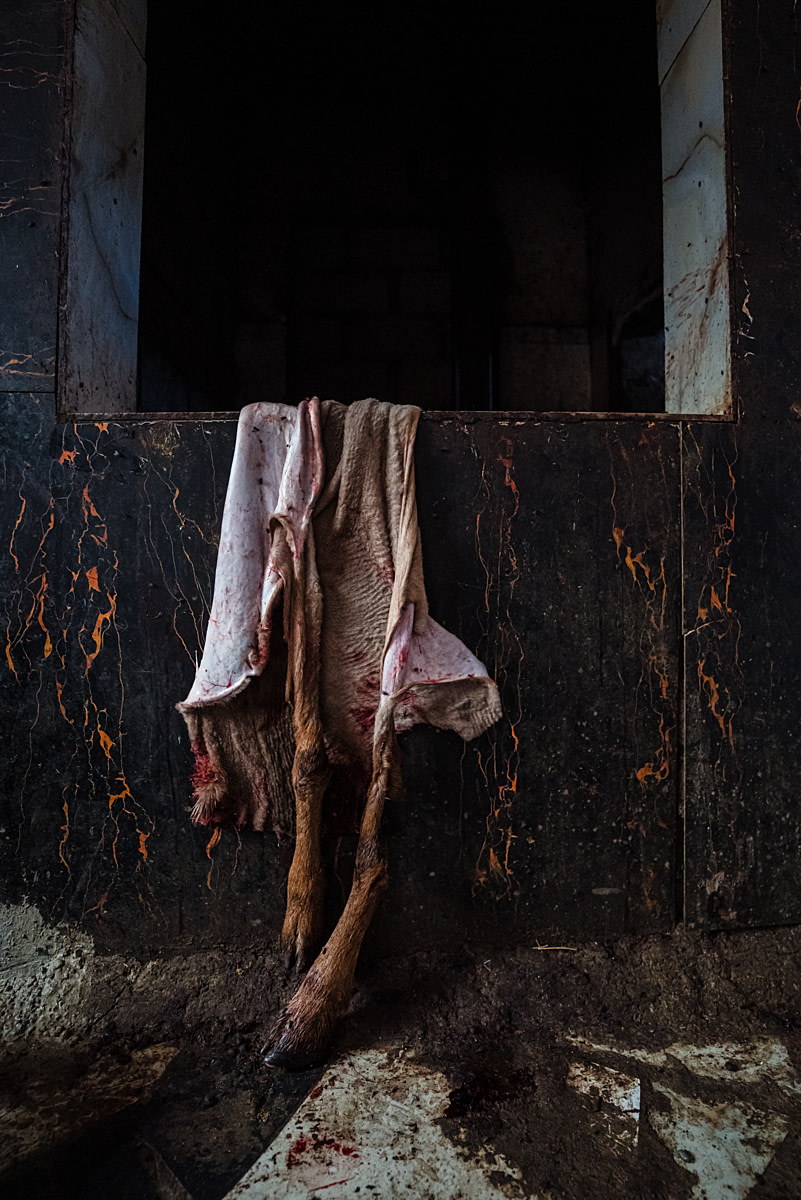
The skin and legs of a sheep, with still attached hooves, hang from a window ledge at a live animal market slaughterhouse. They are all that remains of a sheep full of life moments earlier, now discarded as slaughterhouse waste. Undisclosed, Bishkek, Chuy Region, Kyrgyzstan, 2024.
Bogna Wiltowska / We Animals
What’s next for you in your work? Are there any other animal stories you’re particularly compelled to document?
I want to continue my work in Central Asia and Eastern Europe and begin new projects in South Asia and the Caucasus. These are regions where animals are still waiting for someone to recognize their suffering. We need to redirect more international attention there: not only because the animal rights movement is neglected and underfunded, but above all because the way society views animals urgently needs to change.
In these countries, animals don’t even have the most basic rights. At the same time, rapid capitalism, the growing demand for meat consumption, and relatively low labor costs mean that if we don’t start investing in this region now as an animal rights movement, we risk a disaster of immense animal suffering, one that will be very difficult to reverse. It’s also important to note that these are regions particularly vulnerable to climate change. And its impacts hit the weakest the hardest: in this case, animals as well.
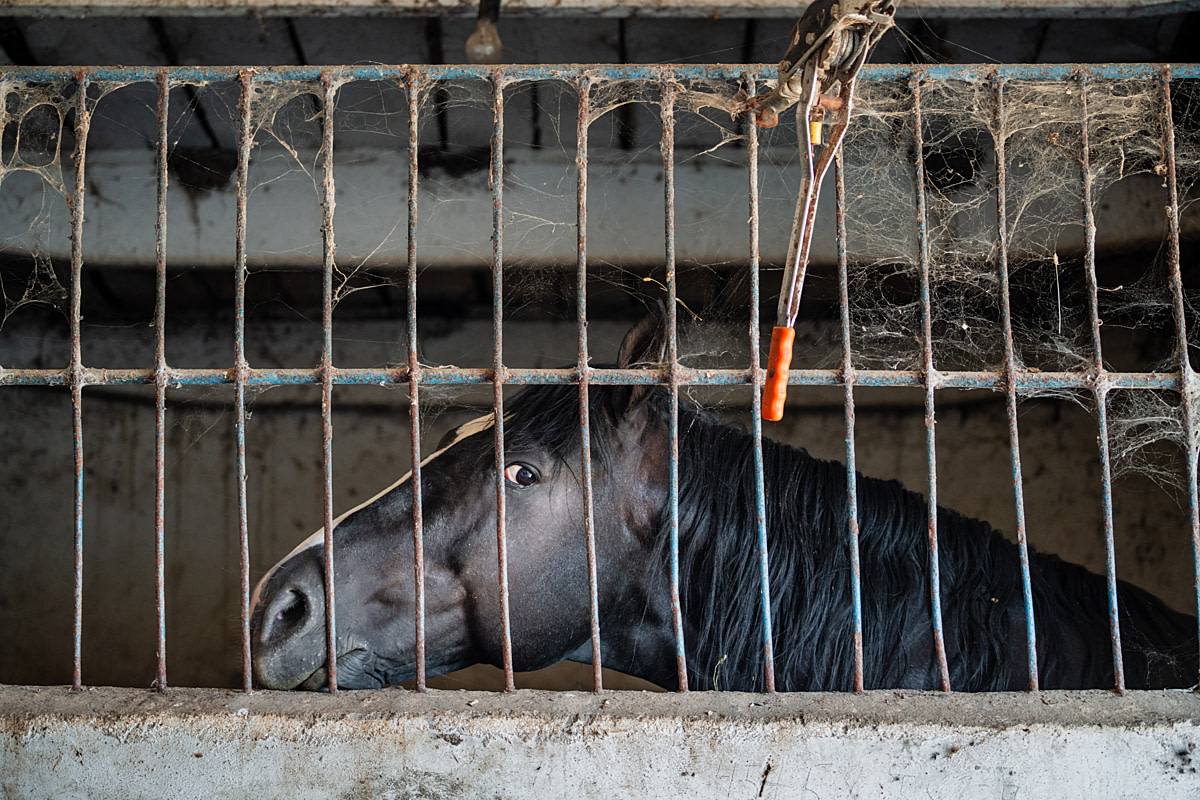
A horse glances warily through the bars of a cobweb-covered stall at a Central Asian farm that raises horses for meat. Horse meat is highly popular here and forms a staple of the local diet. This demand leads to tens of thousands of horses being killed in slaughterhouses annually. Undisclosed, Dmitriyevka, Chuy Region, Kyrgyzstan, 2024.
Bogna Wiltowska / We Animals
Is there anything else you’d like to add about your time on We Animals’ 2024 Animal Photojournalism Fellowship?
Once again, I’d like to say how grateful I am for the chance to be part of the Fellowship, and We Animals more broadly. It truly felt like a privilege. Even with the heavy subject matter, bearing witness in slaughterhouses and other dark places, and the logistical difficulties, I remember that time with gratitude. And even though there are many things I would probably do differently now, I see that as an essential part of the learning process.
For me, the Fellowship opened a new chapter in my work for animals, like a doorway into the next stage of what I want to do. It wasn’t an ending, but a beginning, and I carry it forward as both motivation and commitment.
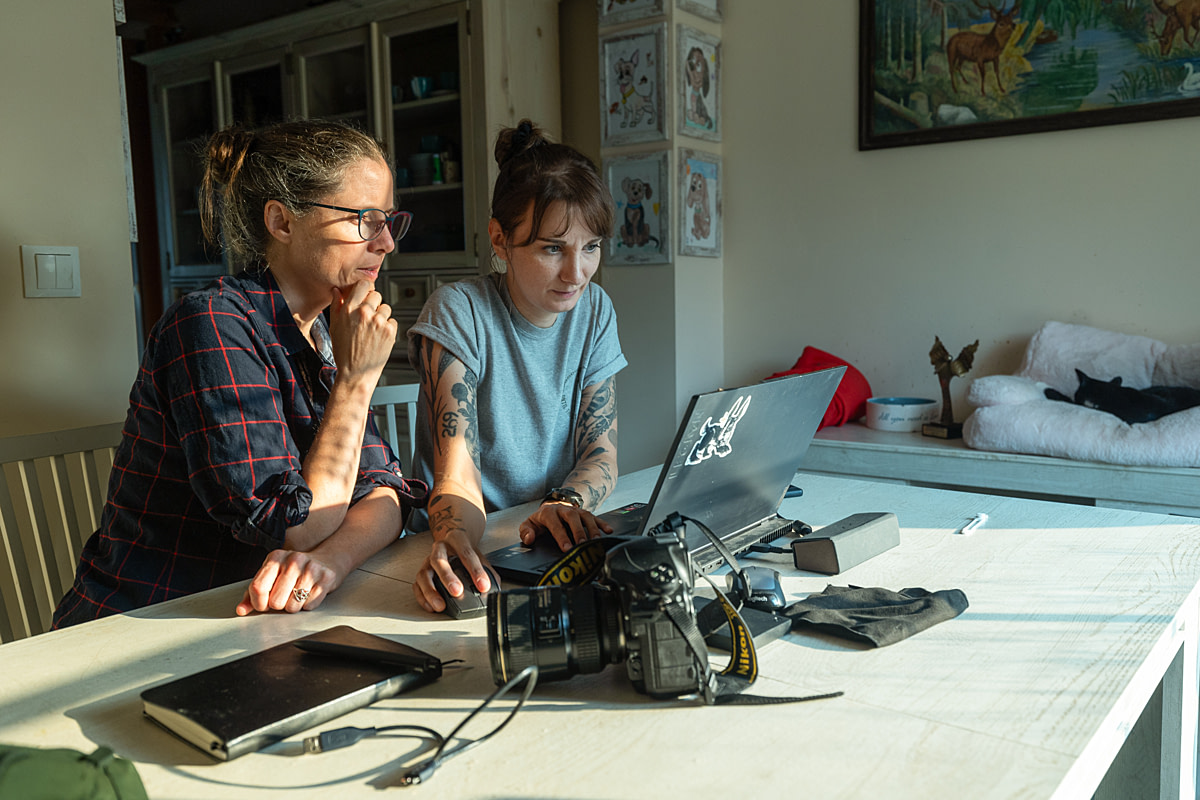
Jo-Anne McArthur mentors We Animals Fellow, Bogna Wiltowska, on image selection and editing. Poland, 2024.
Andrew Skowron / We Animals
Where can people view and follow your work?
People can follow my work mainly through social media via Instagram: @wiltoska
In the near future, I’d like to experiment with other formats. My dream is to create short video reports and written stories, because I believe that combining different forms of storytelling is more powerful and effective. It is a way to reach different audiences and keep the stories alive in more than one medium. Today’s digital world, shaped by algorithms, is not very friendly to creators, especially to those working on animal rights or human rights issues.
I regularly speak about my investigative work at international animal rights conferences, which I always announce in advance on my social media.
The We Animals Animal Photojournalism Fellowship supports up-and-coming photojournalists to cover stories about animals used for food, a subject significantly underreported in the media.
We’ll open applications for the next We Animals Fellowship in early 2026. Subscribe to our newsletter or follow us on social media to stay up to date.
Explore and download more visuals from Bogna’s Fellowship portfolio via our stock platform.

